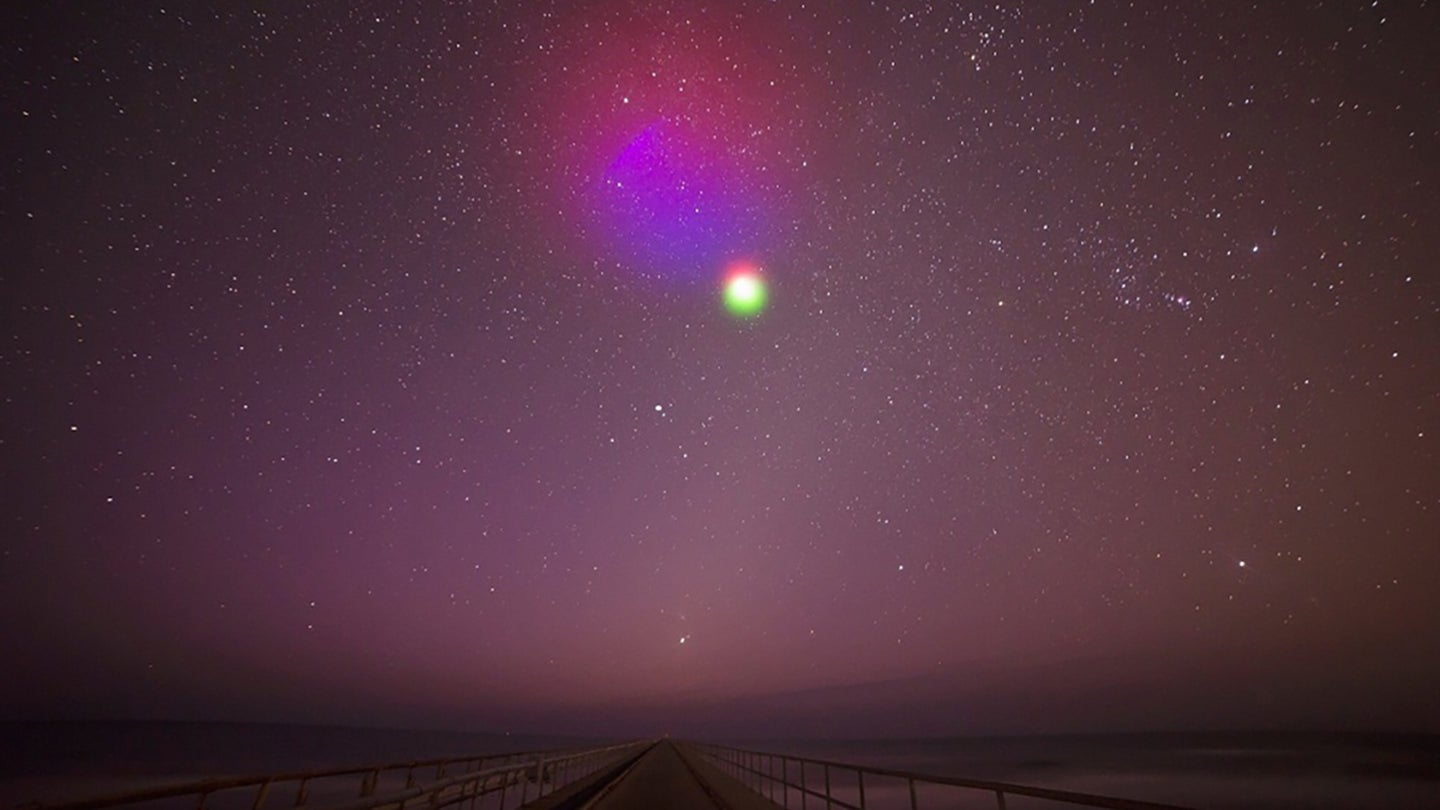NASA to Paint the Sky with Colorful Artificial Clouds Over the East Coast
Skywatchers from New York to North Carolina can see a special display—all in the name of science.

If you happen to be anywhere along America's East Coast this evening around 9:30pm on Monday, you might want to peel your gaze off the Cavs and the Warriors for a few minutes and cast your eyes to the heavens. Sometime between 9:04 and 9:19 on June 12 (which is tonight, in case you've forgotten), NASA will launch a rocket designed to paint the sky from North Carolina to New York with colorful clouds—in the name of science, of course.
That's if all goes according to plan, of course—hardly a guarantee when it comes to rocket launches. Indeed, we Eastern Seaboarders are only getting the chance to see the nocturnal show at a reasonable hour due to a scrubbed launch Sunday night—which, in turn, was only scheduled because several previous dates didn't work, either.
But assuming all goes well at the Wallops Flight Facility in eastern Virginia, NASA's two-stage Terrier-Improved Malemute sounding rocket will launch 10 beer can-sized canisters into the atmosphere at altitudes of between 96 and 124 miles, each of which will release a mist of barium, strontium, and cupric-oxide that combines to create either red or blue-green clouds. (NASA swears the substance is entirely harmless, though we're sure there are some chemtrail believers out there who will raise hell on Infowars.com when they see the clouds floating overhead.)
NASA will use the artificial clouds—formally known as 'vapor tracers,' which sounds more like something you'd see at a Phish concert than in a NASA briefing—to visually monitor the motion of particles in space at the lofty heights where the edge of Earth's atmosphere meets the harsh UV light from the Sun that blasts through great beyond, creating what's known as the ionosphere. In other words, scientists will be spending their night staring up at the sky, watching colorful clouds drift about. (Maybe the drug comparison isn't so far off after all.)
Should you feel like watching the launch, you can do so in person at the Virginia launch site—or you can do it online via NASA-TV's Wallops livestream by clicking here. Just make sure you head outside and look upwards once you're done.
Pictured at top: Artist's conception of the clouds, as seen from the ground.
